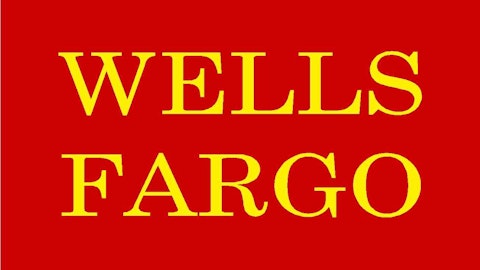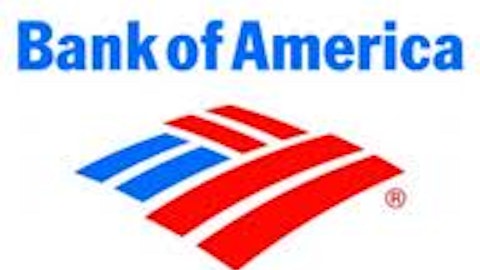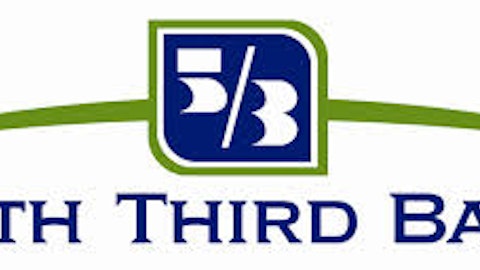Investors seeking premier Main Street banking stocks with excellent long-term income and capital appreciation prospects, without the Wall Street razzle-dazzle accounting, derivatives and trading desks may want to look at Wells Fargo & Co (NYSE:WFC) and U.S. Bancorp (NYSE:USB).

- Strong return-on-equity and return-on-assets versus industry peers
- Excellent financial strength as defined by Tier 1 equity ratio
- Strong expense management as defined by efficiency ratio
- Clearshareholder return-of-capital policy; and a good runway for forward dividend growth
Stalwarts Wells Fargo (NYSE:WFC) and U.S. Bancorp (NYSE:USB) represent large banking institutions with straightforward business models: take in deposits, and originate community mortgages and loans.
Fundamental returns
Both banks rank within or very near the top for return on equity and return on assets.

The following chart, taken from a recent Wells Fargo investor presentation, highlights ROE and ROA performance as compared to large banking peers:
Financial strength
When evaluating a bank’s financial strength, the Tier 1 common equity ratio can be effective; it’s also utilized by Federal regulators.
The Tier 1 ratio is a measurement of a bank’s core equity capital compared with its total risk-weighted assets. The Tier 1 common ratio excludes preferred shares and non-controlling interests when determining the calculation. A firm’s risk-weighted assets include all assets that the firm holds — systematically weighted for credit risk.
Central banks typically develop the weighting scale for different asset classes, such as cash, which has zero risk, versus various securities, which carry greater risk.
Here’s the 2013 2Q results for the two banks:
- Wells Fargo: 10.73%
- U.S. Bancorp: 9.21%
A company must have a Tier 1 ratio of 6% or greater to be classified as well-capitalized.
Both Wells Fargo & Co (NYSE:WFC) and U.S. Bancorp both make the grade by a wide margin.
Expense efficiency ratio
Within the banking industry, the efficiency ratio is calculated by dividing non-interest expenses by revenue — a lower number is better. For example, if a bank spends $100 million and generates total revenue of $150 million in a month, its efficiency ratio is 67%. Banks desire a lower efficiency ratio because this means it’s making more than it’s spending.
Here’s a look at Wells Fargo’s non-interest expense and efficiency ratio:
The story looks very similar at the Minneapolis, Minn.-based U.S. Bancorp:
Notably, U.S. Bancorp has maintained the lowest (and therefore the best) ratio of any of the major U.S. banking institutions.
Shareholder return of capital
Historically, banking stocks are sought for long-term, steady earnings growth and consistent return of capital. Shareholder capital returns are provided via dividends and stock repurchase plans.
Wells Fargo and U.S. Bancorp are noteworthy not only for their sound and growing post-recession stockholder returns, but the clarity by which management communicates targets and executes them.
Since the 2008-09 financial crisis, Federal regulators have required banks to submit annual plans requesting permission to reinstate (or increase) dividends and share buybacks. The plans are evaluated by the regulators, viewed through the prism of financial strength and stability.
The following slide, taken from the Wells Fargo & Co (NYSE:WFC) analyst presentation referenced earlier, outlines Wells’ management total return of capital expectations. A 40% EPS payout ratio target was communicated as part of the commentary.

Federal regulators approved Wells Fargo’s June 1, 2013 dividend, raised to from $0.25 to $0.30 a share. This represented a 30% payout ratio based upon 2013 2Q earnings per share.
Therefore, by deduction, shareholders should expect an uplift in the dividend in order to simply reach the payout goal of 4%, without consideration of future EPS growth. However, Wall Street expects Wells Fargo’s five-year EPS growth rate to be between 7% and 9%.
Assuming a two-year, 7% EPS growth rate, and a 40% dividend payout ratio, the 2015 dividend would be $1.76 per share. Based upon the stock’s recent close, that’s a roughly 4% yield on shares bought today.
Furthermore, Wells Fargo & Co (NYSE:WFC) management has not missed a quarterly Wall Street earnings expectation over the past four years. Zero.
Now then, a slide from U.S. Bancorp’s 2013 second-quarter earnings conference call clearly offers that company’s policy:

U.S. Bancorp received Federal approval to raise their June 26 dividend from $0.195 to $0.23 a share, or an 18% bump. That translated into a 30% quarterly payout ratio, or the low end of management’s guidance.
Assuming a mid-point target payout ratio of 35%, and a two-year, 7% compound earnings growth rate, the 2015 annual cash payment to shareholders may be projected to be $1.13 on diluted earnings of $3.23. That’s a roughly 3% yield based upon recent prices.
Wall Street analysts currently project U.S. Bancorp (NYSE:USB)’s earnings to grow between 6.5% and 8% per year over the next five years.
Similar to Wells Fargo & Co (NYSE:WFC), U.S. Bancorp has not missed a quarterly Wall Street earnings expectation in at least four years.
Foolish bottom line
A sustainable U.S. economic recovery requires participation from the banking industry. Investors seeking strong, solvent financial institutions with a clear, understandable plan to create shareholder value may find that Wells Fargo and U.S. Bancorp (NYSE:USB) fit the ticket.
The article 2 Premier Long-Term Banking Stocks for Your Portfolio originally appeared on Fool.com.
Raymond Merola owns shares of Wells Fargo and U.S. Bancorp. The Motley Fool recommends Wells Fargo. The Motley Fool owns shares of Wells Fargo.
Copyright © 1995 – 2013 The Motley Fool, LLC. All rights reserved. The Motley Fool has a disclosure policy.





